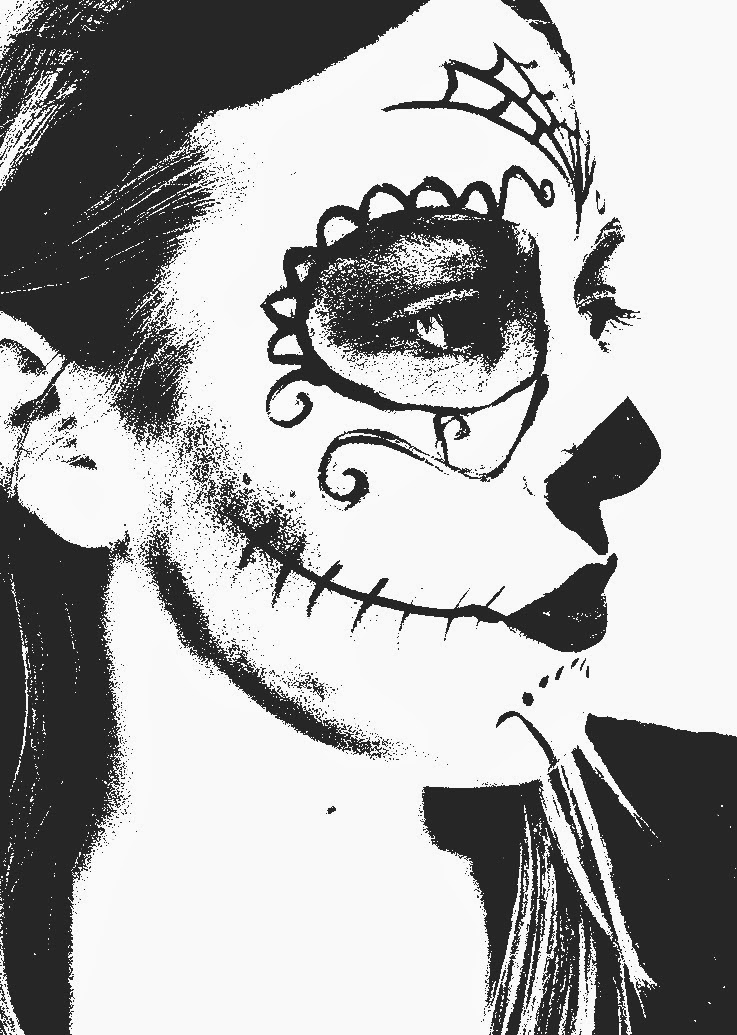- Day of the Dead: edited photos for printing -
I used an editing programme in order to edit some of the photos I took of the Day of the Dead makeup I created. I used an effect to make the photos look like prints; I will then use these photos to create monoprints, using one or two colours.
Below are the edited photos.
I like this effect on the photo editor due to the fact that I could change the colour of the entire image. I think this effect works well to highlight the detailing of the makeup, as well as the shape of the models' faces.
I will use some or all of these images to create some monoprints, as well as creating some more makeup/face paint designs.


















